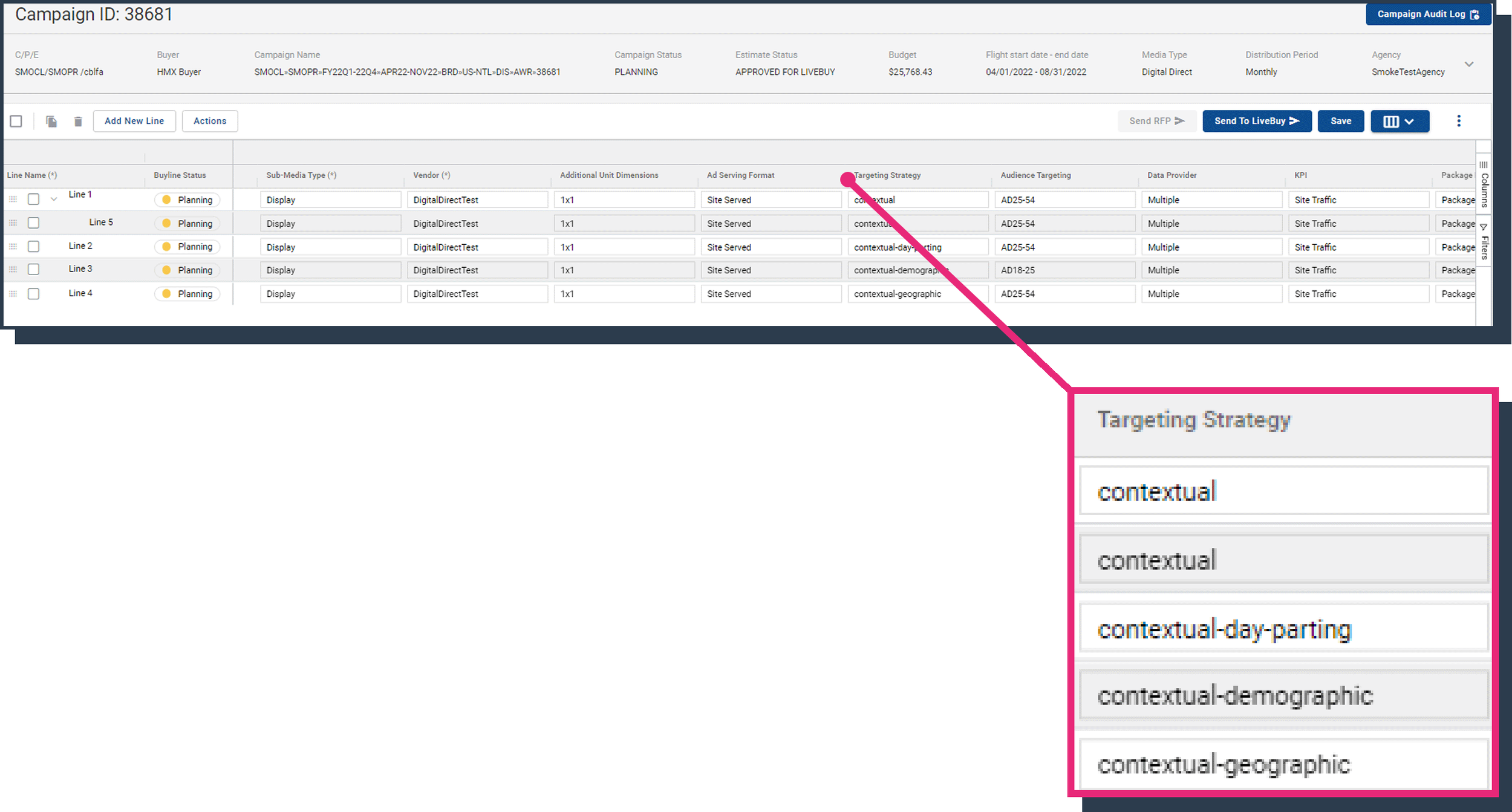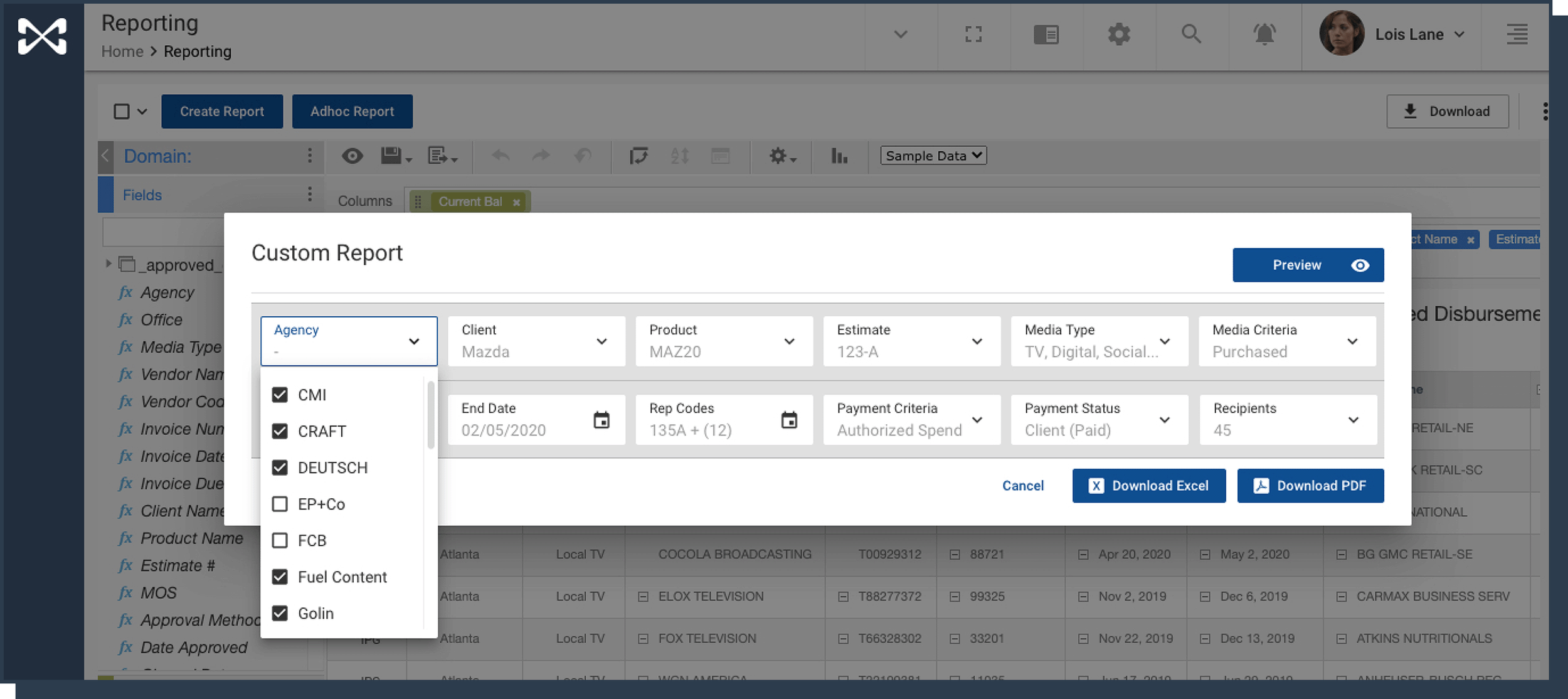Strategies for the Digital Media Buying Frontier

Learn why leading brands and agencies use our product to meet their goals.
Meet Hudson MXWhat you’ll learn
How to streamline your tech stack to execute more efficient and innovation-friendly digital media buying strategies.
How to integrate and employ new, up-to-date technologies, metrics, and strategies as they arrive on the market.
How to quickly execute and measure across digital workflows seamlessly, utilizing any data source or buying platform you want—without manual work.
This blueprint is relevant for you if . . .
Media platforms at your disposal feel burdensome compared to the buying platforms and digital spaces you use daily.
Your team has invested in several data sets and measurement tools, but could be leveraging them more comprehensively if processes were less manual and allowed for more automation.
Adopting new strategies, technologies and mediums can be a strain on resources and blocked by the tools at your disposal.
Your clients or teams are looking for ways to prepare for anticipated regulatory and technology-driven shifts in the digital media buying landscape.
Key audiences
Chief Marketing Officer
Chief Investment Officer
Head of Programmatic or Digital
Digital Media Buyers
Digital Marketing Managers
Technology requirements
Flexible, open API design
Cloud-first infrastructure
Configurable, easy-to-use, low-code/no-code interface
Cutting through the noise
The world of digital media buying is constantly evolving, with even more options to get in front of consumers emerging each day. As the industry innovates to keep pace with market and technological shifts, buying teams also have more data and tools at their disposal than ever before. Digital advertising—driven largely by the continued digitalization of more traditional ad mediums—accounts for over half of global ad spend and growth, with an estimated spend of $409.9 billion for 2022, a nearly 15% increase over the previous year. Also on the rise: the number of digital marketing vendors to choose from—which grew an astounding 520% in the last nine years according to a >recent Association for National Advertisers (ANA) report.
While it’s true that infinite innovation poses new opportunities for advertisers at every turn, this does not come without challenge. Sure, advertisers have thousands of tools and data sources at their disposal, but leveraging and integrating them can be easier said than done. And, yes, media buyers can now infuse new approaches—like Google’s new digital OOH format, for example—to their ad mixes, but for every new strategy, data point, or tool available to advertisers, there are myriad setup, ramp up, and other tasks to get data from one point to another standing between adoption and tangible results.
Once you layer in regulatory shifts like cookie deprecation, new ad types, and constantly evolving technology, digital media buying teams are finding they need to activate and ramp up new strategies more quickly than ever before.
The good news is that, according to the same above-referenced ANA report, the industry stands to gain at least $10 billion by simplifying the complex matrix of marketing tech and data, better streamlining and activating tools and data, and improving ROI-tracking capabilities. Still, making good on such investments and opportunities has to start with “cutting through the noise,”—integrating all of the components of a digital media buying strategy within a modern, configurable technology infrastructure built to grow along with the media landscape.
This guide shares practical steps digital media buying organizations can start taking immediately to begin their march toward: streamlining digital tech tools and data, ramping up new strategies, and making digital buying more efficient and less costly.
SECTION 1
Under the hood: Foundation first
For many agencies and brands, the process of aggregating all of the steps and components necessary for digital media buying today is unfortunately wrought with a slew of manual workarounds. This starts with the planning stage, or pre-buy, where visibility of supplier costs needs to be matched up against goals and budgets. When it comes time for actualization, billing, and paying, invoice and DSP data can become a beast to consolidate.
There are opportunities to save time—and money—at literally every turn, regardless of which platforms and data buyers want to use This begins with integrating your media buying tech stack and future-proofing your data taxonomy.
Streamline and integrate your tech stack for greater flexibility and efficiency.
Integrating all of your tools, platforms, and data into a central, modern technology infrastructure makes it easy to set up campaigns, add new tools, onboard partners—or even implement new workflows or buying strategies. It will also facilitate the complex integration of any type of data without rekeying or manually uploading across buying, reconciling, and reporting points in the workflow. The best part: with the right enterprise media platform, you can continue to spend time in the tools you want to use, without worrying about manually translating data across screens or parts of the workflow.
Ensure client and campaign data infrastructure supports shifting strategies with speed, ease, and accountability.
Now—more than ever—data integrity and the ability to surface it across the workflow are essential to planning, executing, and measuring an effective and efficient digital buying strategy. In practical terms, this is achieved through a standardized, custom taxonomy—a common language that ties data together across all steps of a digital marketing workflow.
A sophisticated taxonomy foundation is what allows digital teams to plan, order, bill, and pay with accuracy and ease. This functionality also makes it much easier to quickly and effectively pivot or change strategy, enabling teams to create more fluid and flexible campaigns.
Suppose, for instance, your planning team decides to start introducing more demographically-targeted ads to reduce the overall percentage of programmatic, cookie-dependent buys. Buyers can create targeting strategy taxonomy that will then be viewable categories across custom-configured worksheets in pre-buy and live-buy, translating each line into new, actionable, accessible, and clean data points across planning, buying, and reconciliation stages of a workflow.
SECTION 2
Try, implement, and track new strategies with ease.
Every digital media buying team is looking for ways to improve performance. In such a quickly evolving space, being able to try new ad types, data partners, content sources or other strategies is extremely important. Once digital buying teams streamline their workflows, third-party apps and data within a central enterprise media buying system, it becomes much easier to execute new and existing strategies with confidence.
Let’s turn now to some opportunities made possible once the right foundation is in place.
Quickly activate new strategic tools and partners.
Adding a new component—such as a new type of ad platform or data provider—to your tech stack is an unavoidable part of maintaining a cutting-edge digital ad strategy. However, each new change can add unnecessary complexity and extra work to the buying workflow, often making opportunities to innovate more like a burden than an opportunity. But with the right foundation, this does not have to be the case.
For example, suppose that a media buying team needs to view all campaigns for a brand’s advertising suppliers during live buy, including a new advertising platform that the team has just added to the mix. Via an ad server integration, what might have previously required weeks of work, IT teams, special tokens, and weeks of emails can now be achieved in a matter of clicks. Teams can pull in configurable and relevant data directly from the integrated platform—without the need to verify through a third-party verification partner.
Simplify buying across your digital ad mix, with single-view worksheets.
A critical element of optimizing digital marketing strategies is managing and enabling auto-actualization of digital campaigns without rekeying data across screens. This is cumbersome as a manual process, even if a team might be working with their typical data, buying platforms, or strategies. As media types become more converged, the ability to build a mix of digital buying strategies—including programmatic, digital, search, and social—from one worksheet view, and across multiple suppliers, becomes central to creating better efficiency for digital media buying teams across pre-buy campaigns and live buy. Managing data and pulling actuals from multiple integrated sources allows buyers to save time, allows for optimal flexibility, and can be managed in one place and pull in actuals from multiple integrated sources to auto-actualize.
Introduce new cost methods or measurement sources for new buying methods and better performance.
Once a new partner or vendor is integrated into the system, introducing other new components to a strategy, like how your team measures cost and performance, also becomes a much simpler process. While digital buying teams may be interested in unlocking new ways of buying and measuring campaign performance, this is often a cumbersome process that requires manual changes—and more risk of error—across multiple documents and platforms. However, setting up new cost methods and measurement sources can be accomplished in a matter of clicks, with your tech stack integrated across your enterprise media platform.
For example, you may decide to try shifting measurement from cost per acquisition to a custom cost per video interaction calculation or you may want to add a new measurement partner for “viewable impressions” to pay off of, rather than having to execute this in a slew of manual steps, in just a few tabs, automated to translate in each step of a workflow.
Unlock next-level reporting to track, measure and forecast your campaigns.
Whichever cost or measurement methods a team might decide to use, today’s digital buying teams also must be able to forecast, view and track data seamlessly—without extensive workarounds like extra coding or free-form fields that lack structure and standardization.
A sophisticated data taxonomy, clean and mapped language across the platform, and ability to harness data across all media types third parties enables the data integrity required for reliable and straightforward in-platform forecasting and visibility. So, as digital buying teams expand ad spend to include new strategies and mediums, they can also use custom reporting tools that import data directly within the MX Platform—forecasting new buying strategies that rely not only on programmatic methodology but on delivered data as well.
CONCLUSION
An eye on the digital advertising frontier
From Web3 to TikTok to the latest DSPs–brands expect digital advertisers to have a constant pulse on what’s “next”—while also expecting their campaigns to get in front of the right audiences at the lowest possible cost. That is why it is especially critical for digital advertising teams to be able to not only build efficient and effective campaigns, but also activate new strategies and harness the right tools, data and tech in order to continually deliver the best possible results. Creating a centralized, sophisticated tech infrastructure allows teams to streamline their workflows and leverage automation, integration, and a sophisticated data taxonomy to ultimately reduce time waste and errors, create more efficient campaigns, and stay on the cutting edge of what lays just ahead, on the digital advertising frontier.
Want to learn more? Get in touch.
More from MX Insights












